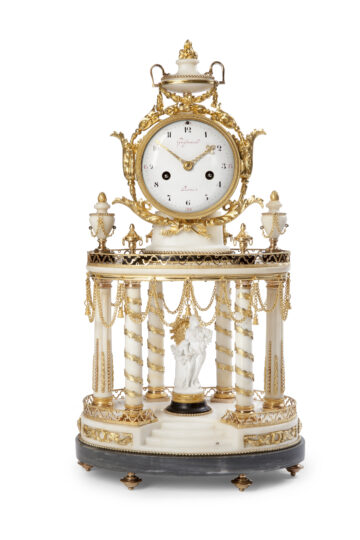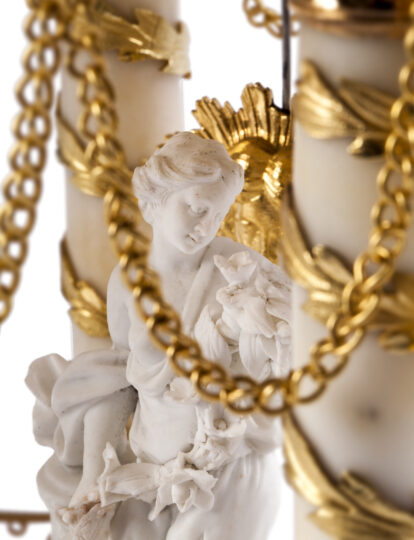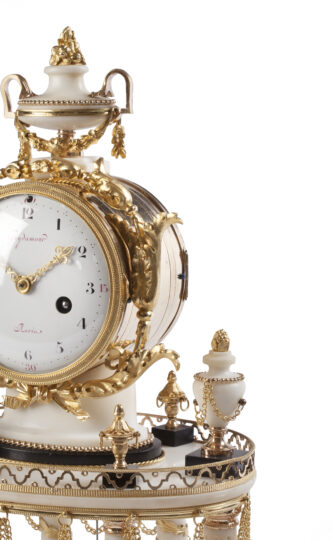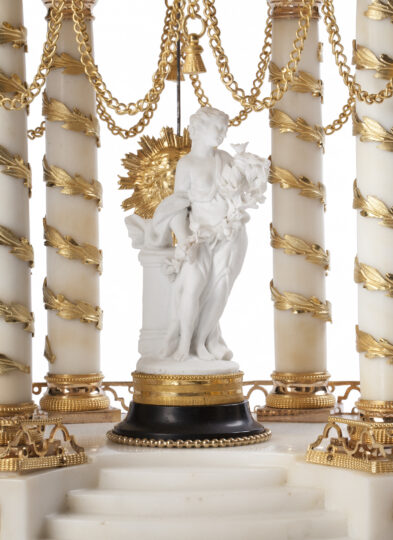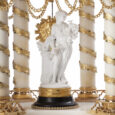MANTEL CLOCK L. XVI “TEMPLE D’AMOUR” Guydamour AParia ca. 1780 France
M&R70
MANTEL CLOCK “TEMPLE D’AMOUR” L. XVI
Signed: Guydamour AParia
Circa 1780
France
Movement
The spring-driven movement is a typically Paris movement with circular plates, anchor escapement and a silk-suspended pendulum with a sunburst bob. It strikes the hours fully and the half hours with a single stroke on a bell, the train being regulated by an external count wheel.
Dial
The convex enamel dial of the mantel clock has black Arabic hour numerals and Arabic quarter-hour divisions in red, five-minute and minute divisions. The clock is signed in red by the maker above and below the middle of the dial: Guydamour AParia. Above the XII is a regulation arbor which controls the length of the suspension wire of the pendulum. The time is indicated by a fine pair of symmetrically pierced gilt-brass hands. The dial is protected by a convex glass set in a machined gilt-brass bezel with a double pearl string.
Case
The white and grey marble case of this mantel clock has a circular base in the shape of a temple d’amour. There are six gilt-brass capped pillars, four of which are embellished by winding gilt-brass vines, the remaining two being fluted and reeded with pearl strings. In the middle is a marble statue depicting a lady draped with a flower garland, her arm resting on a column. The plateau on the pillars has a pierced gilt-brass fence on the edge and gilt brass chain swags hanging from the underside. The movement is situated on this plateau flanked by two vases and surrounded by four gilt-brass finials. It is surmounted by a richly adorned chalice with swags, pearls strings, ears and a floral ornament on top.
Duration 1 week.
Height 56 cm
Width 28 cm
Depth 20 cm.
Literature
Tardy, Dictionnaire des Horlogers Français, Paris, 1971, p. 287.

